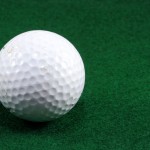 OK – so we’ve covered woods, irons and putters, now for the other essential part of a round of golf (apart from the course!) – the ball.
OK – so we’ve covered woods, irons and putters, now for the other essential part of a round of golf (apart from the course!) – the ball.
As you would expect, there are hundreds of different types of ball, different brands, different feels, balls for every type of golfer from beginner to professional tour player.
So let’s get the technical stuff out of the way first!
Under the Rules of Golf, a golf ball must weigh no more than 1.620 oz (45.93 grams), and have a diameter not less than 1.680 in (42.67 mm). Each ball must perform within a specified velocity, distance, and symmetry limit and every ball is subject to testing and approval by the Royal and Ancient Golf Club of St Andrews and United States Golf Association.
So – what’s the best ball for a beginner?
If I’m being honest – I’d say the cheapest possible! It’s fair to say that when you first start playing, you will probably lose a few balls, and also not have the skills to add spin and suchlike until a bit later on. You can buy bulk golf balls or even ‘lake’ balls – balls that have been found at the bottom of the lake by the greenkeepers and then re-sold. However I’d suggest something simple like a Pinnacle Gold or Wilson Ultra. These are cheaper balls but still decent quality and so if you lose a couple here and there it shouldn’t be adding too much to the cost of your round!
These balls are also good for distance and durability – so perfect for any beginner golfer.
As you become a better player, the chances are that price will need to become less of an issue, as you look at clubs and balls that will match your improved standard, and help you to improve your game even further.
You’ll be looking for more control in your short game, but will also still need some distance help too. In this case I would recommend the Titleist NXT which provides a great balance between distance and spin, and is therefore really suitable for intermediate players.
Now as you progress to much lower handicaps and your game really starts to take off, it’s at this point that you really need to start getting to the nitty-gritty of what clubs and balls to use. By this point, distance of the tee shouldn’t really be an issue for you – you should naturally be able to hit the ball long and straight (most of the time!).
Where you will really benefit in terms of which ball you use is around the greens – something with a soft cover for maximum ‘feel’ and control – helpful for wedge shots to help you stop the ball on the green.
The ball I’m currently using is the Titleist ProV1x for this very reason, and I would highly recommend it for more advanced golfers. More professional players use Titleist than any other brand – according to the Titleist website, they’ve had 47 tournament winners using their balls in 2011 – compared to just 10 with the nearest competitor!
Golfers need to distinguish their ball from other players to ensure that they do not play the wrong ball. This is usually done by using a simple marker pen to put the golfers initials on the ball. Top golfers (or those with time on their hands!) may have already pre-printed a logo or initials on their ball, for instant identification.
Finally, here’s a funny fact. In 1973 a ball was invented with radio transmitter inside it so that lost balls could easily be tracked on a golf course – not surprisingly this technology was quickly banned by the golfing powers that be!
If you need any advice on golf balls or any other aspect of the game then that’s what I’m here for! Drop me a line at james@jamesironsgolf.co.uk .
Have a great weekend!








